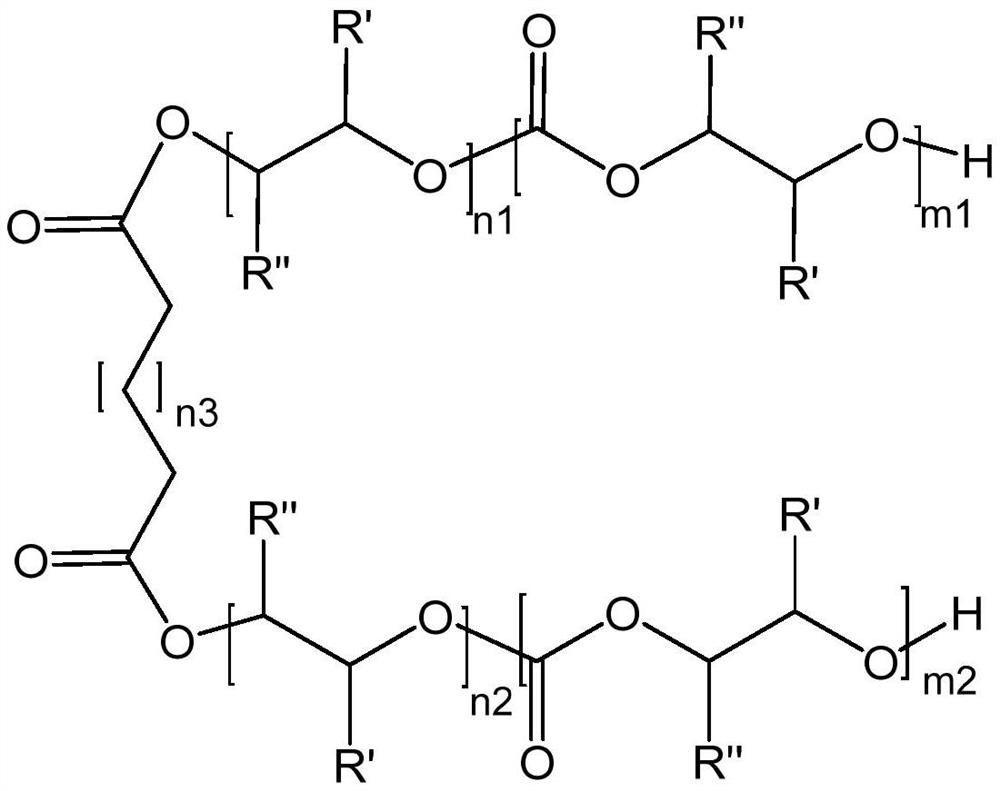A kind of preparation method of polycarbonate-polyether diol
A polyether diol and polycarbonate technology, which is applied in the field of polycarbonate-polyether diol synthesis, can solve the problems of prolonged reaction time, increased ratio of cyclic carbonate, and increased production cost of polymers, etc. Improve mass and heat transfer capacity and effect, improve activity and selectivity, optimize molecular weight distribution effect
- Summary
- Abstract
- Description
- Claims
- Application Information
AI Technical Summary
Problems solved by technology
Method used
Image
Examples
Embodiment 1-11
[0043] A kind of preparation method of polycarbonate-polyether glycol, the structural formula of described polycarbonate-polyether glycol
[0044] as follows:
[0045]
[0046] The number average molecular weight of the polycarbonate-polyether diol is 500-5000, the molecular weight distribution coefficient PDI is 1.0-1.2, the hydroxyl value is 22.4-224.4 mgKOH / g, R' is selected from hydrogen atom, methyl group, ethyl alcohol group, chloromethyl group, R" is selected from hydrogen atom, methyl group, ethyl group, chloromethyl group, m1, m2, n1, n2 are positive numbers, 1≤(m1+m2):(n1+n2), 0≤ n3≤8 integers;
[0047] Include the following steps:
[0048] (1) Introduce epoxy, catalyst, initiator and carbon dioxide into the premixing tank for premixing. The premixing pressure is 0.1-2MPa, the premixing temperature is 0-50°C, and the premixing time is 0-3 hours. Then import in the pipelined continuous reactor, described pipelined continuous reactor comprises heating section gro...
Embodiment 12
[0087] Embodiment 12 with reference to embodiment 6, embodiment 12 adopts the raw material of embodiment 6 and catalyst and reaction technology, difference is, the initiator of embodiment 12: epoxy monomer mole is 1 / 50, and temperature of reaction is 80 ℃, and There are two sets of piped reactors than in Example 12, one set is a laboratory device, and the inner diameter of the pipeline is 10mm, and the other is a pilot plant, and the inner diameter of the pipeline is 100mm. The purpose is to view the present invention by enlarging the size of the pipeline Whether the method has amplifying effect.
PUM
| Property | Measurement | Unit |
|---|---|---|
| hydroxyl value | aaaaa | aaaaa |
| hydroxyl value | aaaaa | aaaaa |
| hydroxyl value | aaaaa | aaaaa |
Abstract
Description
Claims
Application Information
 Login to View More
Login to View More - R&D
- Intellectual Property
- Life Sciences
- Materials
- Tech Scout
- Unparalleled Data Quality
- Higher Quality Content
- 60% Fewer Hallucinations
Browse by: Latest US Patents, China's latest patents, Technical Efficacy Thesaurus, Application Domain, Technology Topic, Popular Technical Reports.
© 2025 PatSnap. All rights reserved.Legal|Privacy policy|Modern Slavery Act Transparency Statement|Sitemap|About US| Contact US: help@patsnap.com



